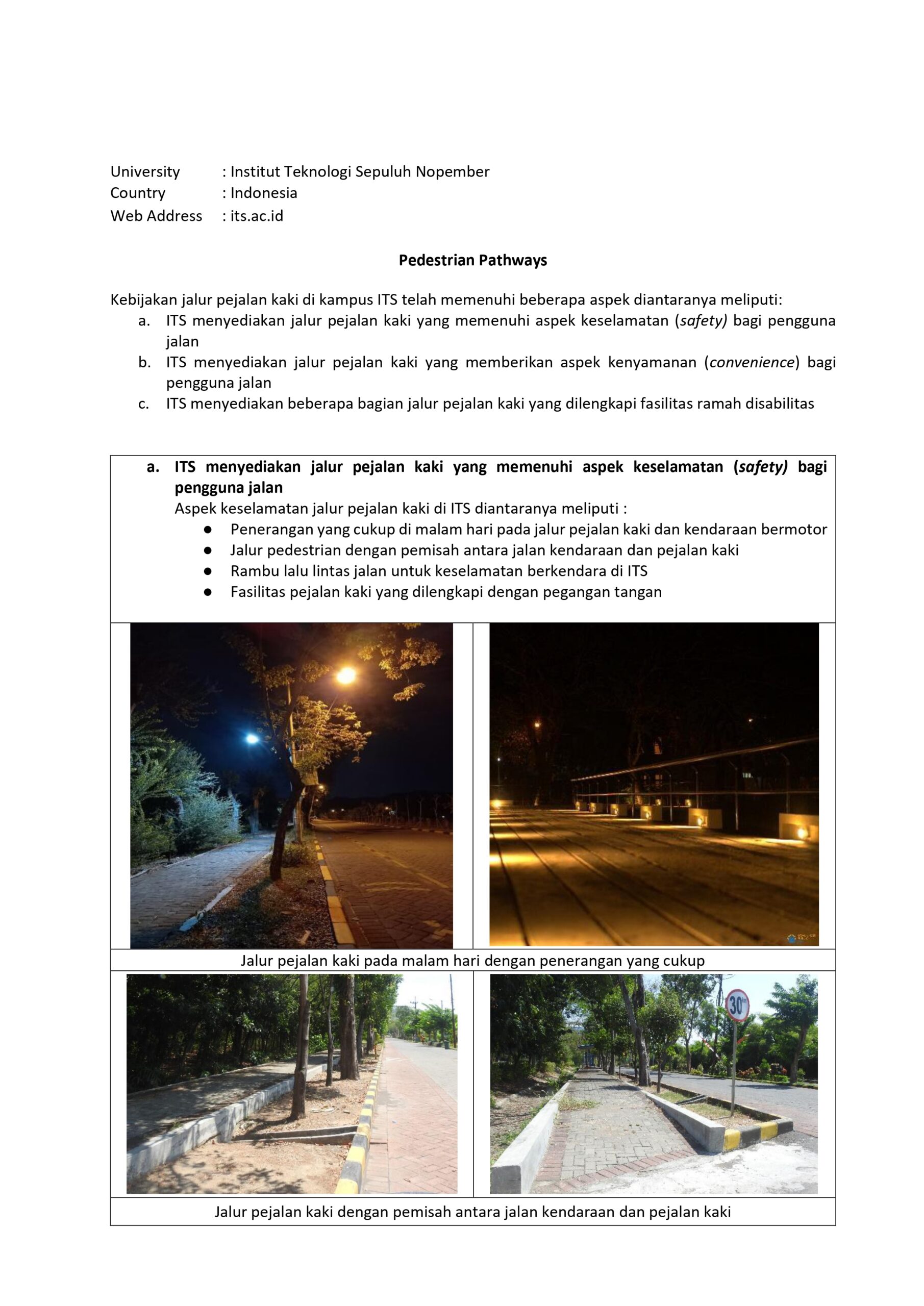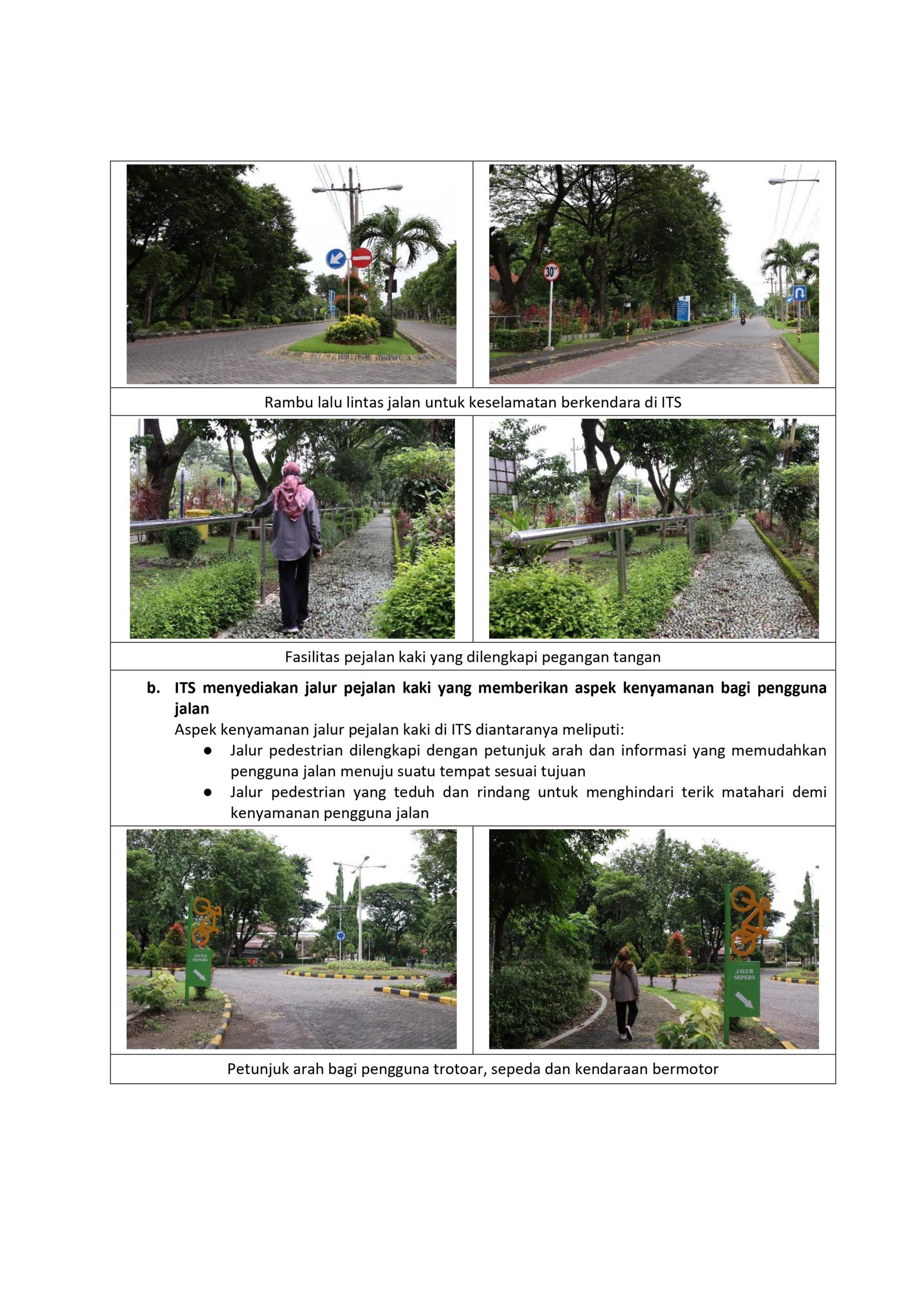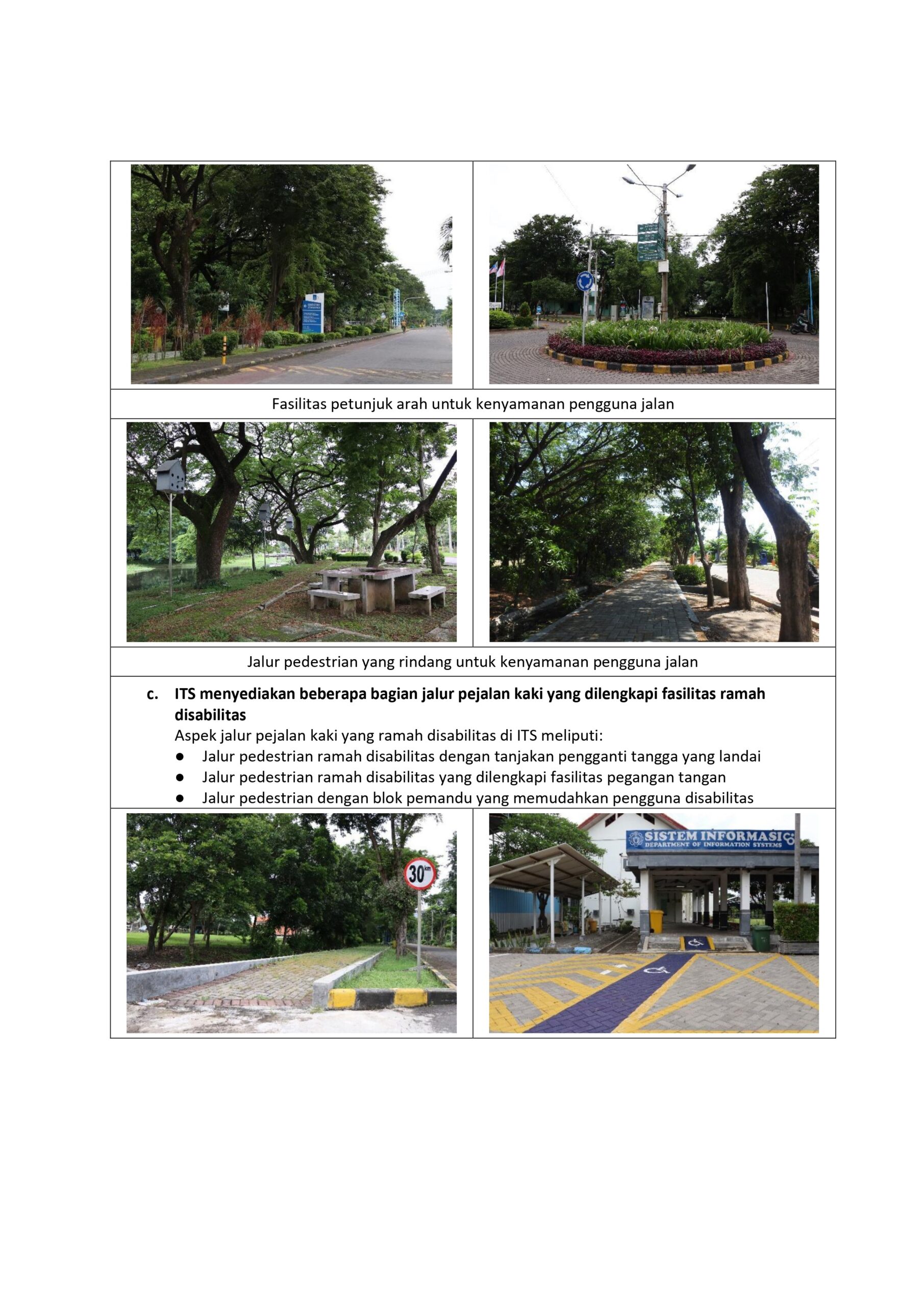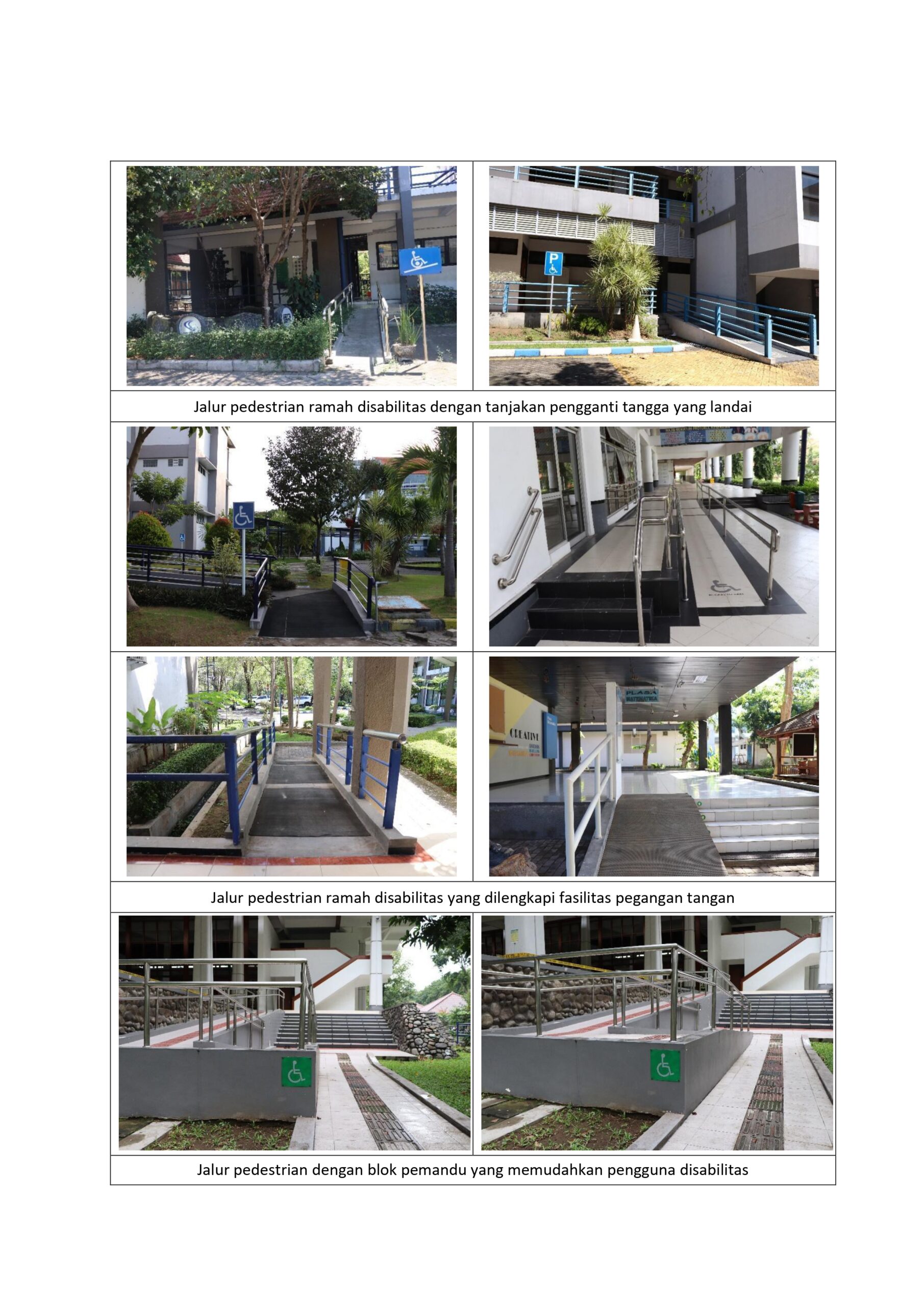Prioritizing pathways for pedestrians is an effective and forward-thinking method that can significantly transform urban environments and encourage more environmentally responsible transportation. Campus can encourage people to walk or cycle by focusing on the building and maintenance of pedestrian-friendly infrastructure, reducing congestion and air pollution. This development not only improves air quality, but it also promotes physical well-being and stimulates a feeling of community by encouraging people to engage more in a walkable area. This policy’s prioritization can encourage thriving, resilient, and sustainable communities by acting as a catalyst for positive change.
ITS Rector’s Statement Letter in achieving the Sustainable Development Goals, encourages proper ITS campus pedestrian pathway policies. Several aspects of the ITS campus’s pedestrian pathway policy have been fulfilled met, including:
A. ITS provides pedestrian pathways that meet road user safety requirements. ITS pedestrian routes are safe in the following ways:
- Sufficient nighttime lights on pedestrian pathways and motor vehicles.
- Separation of automobile and pedestrian pathways.
- ITS provides road signages for driver safety.
- Handrail-equipped pedestrian pathways.
B. ITS provides pedestrian pathways for the comfort of road users. ITS pedestrian pathways are comfortable in the following ways:
- The pedestrian pathways are supplied with signages to help users find their way to their destination.
- For the convenience of road users, there should be shady pedestrian pathways to avoid the hot sun.
C. ITS provides several sections of pedestrian paths equipped with disability-friendly facilities. Aspects of disability-friendly pedestrian paths at ITS include:
- Disability-friendly pedestrian path with ramps in place of sloping stairs.
- Disability-friendly pedestrian path with handrails.
- Pedestrian path with guide blocks that make it easier for users with disabilities.




